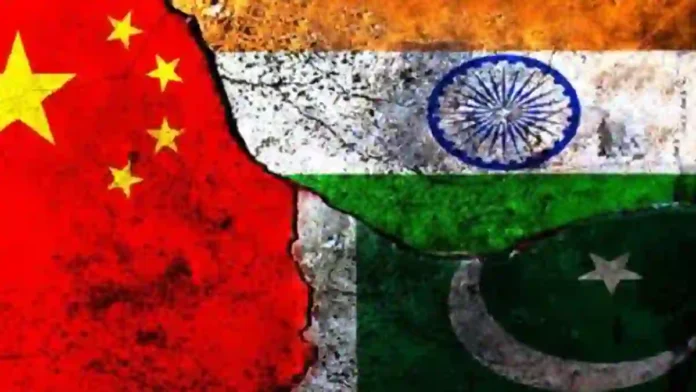The recent meeting of the Standing Committee on External Affairs in the Indian Parliament placed significant focus on the growing military alliance between China and Pakistan, a partnership that was prominently displayed during Operation Sindoor. Members of the committee, including both ruling and opposition MPs, expressed concerns about the implications of this alliance for India’s security, especially in the context of the Indian Ocean region and broader South Asian geopolitics.
Key Issues Raised In The Parliamentary Panel
China-Pakistan Military Cooperation: The committee acknowledged the depth of China’s military support to Pakistan, which was highlighted during Operation Sindoor. China has supplied Pakistan with a wide array of advanced weaponry, including fighter jets, drones, air defines systems, and naval assets. This military hardware forms the backbone of Pakistan’s defence capability and was actively employed during the recent conflict. The operation itself exposed Pakistan’s heavy reliance on Chinese-supplied equipment and underscored the operational synergy between the two militaries.
Read- PM Modi Categorically Clarifies To Trump—No US Role In India-Pakistan Ceasefire
Operation Sindoor’s Strategic Impact: Operation Sindoor, launched by India in response to a major terrorist attack in Jammu and Kashmir, involved precision strikes on terrorist infrastructure in Pakistan and Pakistan-occupied Kashmir.
While the operation demonstrated India’s military capabilities, it also revealed vulnerabilities in Pakistan’s defence, particularly its dependence on Chinese technology. The conflict brought to the fore the real-time military cooperation between China and Pakistan, with China providing not just equipment but also diplomatic support at international forums.
Concerns About Regional Alignments: Some committee members raised alarms about Bangladesh’s perceived increasing proximity to China, suggesting the possibility of a strategic triangle—China, Pakistan, and Bangladesh—emerging against Indian interests. This was seen as a potential new axis that could complicate India’s security environment further.
Read- Bharat Forge-Turgis Gaillard Pact: Strategic Push For Indigenous AAROK UAV Production In India
India’s Defence Budget And Modernisation: A recurring concern was India’s defence expenditure as a percentage of GDP, which is currently at its lowest in several decades, standing at 1.9%. Members argued that this level of spending may not be sufficient to keep pace with the rapid military modernisation and budget increases seen in China. There was consensus that India needs to increase its defence budget to ensure long-term capability development, particularly in light of the growing China-Pakistan military nexus.
Indian Navy’s Role And Preparedness: Officials from the Ministry of Defence and the Navy emphasised ongoing modernisation efforts and outlined long-term plans to enhance naval capabilities. The Indian Navy’s critical role in safeguarding the country’s economic and strategic interests in the Indian Ocean was highlighted, with assurances that the Navy is prepared to meet any challenge posed by adversarial alliances.
Monitoring Chinese Activities In The Indian Ocean: The external affairs ministry provided background on the activities of Chinese research and survey vessels in the Indian Ocean, noting that these are closely monitored and that diplomatic measures are taken as appropriate under international law.
Summary of Deliberations
The parliamentary panel’s discussions reflected deep unease over the evolving China-Pakistan military partnership and its implications for India’s security. The committee recognised the urgent need for enhanced defence spending, accelerated modernisation, and a robust Indian Ocean strategy to counterbalance the growing strategic alignment between China and Pakistan. The session underscored that India’s preparedness must be continually reassessed and strengthened to address emerging threats in a rapidly shifting regional security landscape.
Based On A PTI Report
Agencies




